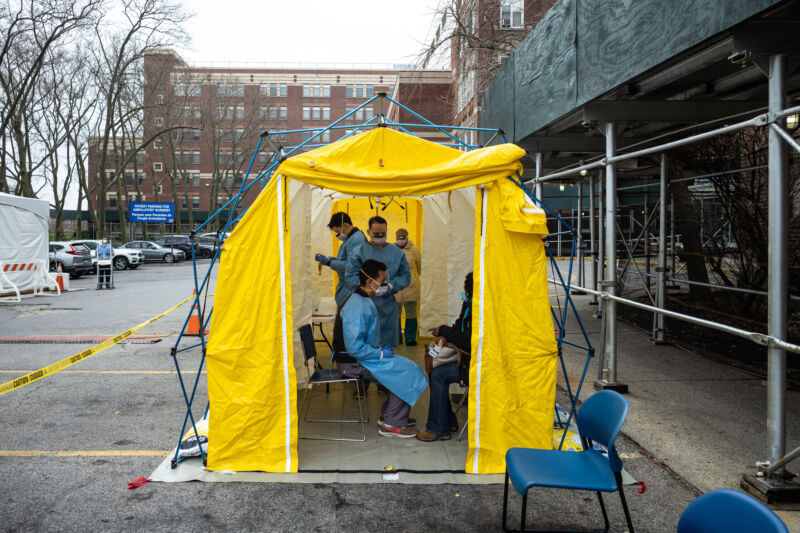In ERs overwhelmed by COVID-19, here’s who might get treated—and who might not

Enlarge / NEW YORK, NY - MARCH 20: Doctors test hospital staff with flu-like symptoms for COVID-19 at St. Barnabas hospital on March 20, 2020, in New York City. St. Barnabas hospital in the Bronx set up tents to triage possible COVID-19 patients outside before they enter the main Emergency department area. (credit: Getty | Mischa Friedman)
The new coronavirus doesn't just kill by storming lungs and other organs. It also kills by besieging health care systems.
If left to swirl in a community unchecked for a few weeks, the virus can whip up a tsunami of cases that crash into urgent care clinics, emergency departments, and intensive care units, quickly washing out beds, supplies, and staff.
In such a crisis, doctors must make heart-wrenching decisions about which patients get the last beds and which get scarce ventilators and respiratory therapists. At the same time, they're likely facing shortages of personal protective equipment (PPE), such as masks and gowns. Rationing and reusing such items leads to more nurses and doctors getting sick. That means fewer health care workers to wade through the flood of patients. Some may even join their patients in needing critical care.
Read 22 remaining paragraphs | Comments